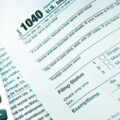ARA
Whether you do your own taxes or rely on outside help, it is your responsibility to assemble all the appropriate year-end tax forms needed to correctly complete your tax return.
This process can be both tedious and confusing, as forms arrive daily in the mail from various sources – your employer(s), the bank, mortgage lender, even the day care provider – causing you to wonder when and if you have everything you need.
However, spending time assembling the proper information and forms before you file is a good practice, saving you (or your preparer) time and ensuring a more thorough and accurate tax return in the end.
According to the experts at Greatland Corporation, a company that provides W-2 and 1099 tax forms and e-filing services to small businesses, there are more than 25 state and federal year-end reporting forms a taxpayer could potentially receive. They include:
- A W-2 is the form your employer will use to report your yearly wage and withholding information. Your employer should have provided you this form no later than Jan. 31. You should have received four copies of this form to report federal, state and local income, and maintain a copy for your own records.
- A 1099-MISC is the form used to report miscellaneous income, such as income earned as a contract or freelance worker, as well as fees, royalties, commissions and rental income. Payments for prizes, awards, attorney fees and other non-employee reimbursements (mileage, automobile, etc.) may be reported on this form as well. If you are a contractor or freelance worker, any business or entity that pays you more than $600 a year must provide you with a 1099-MISC form to report this income on your tax return.
- If you were unemployed at any time in 2010, a 1099-G is used to report unemployment benefits. It also reports other government payments, such as state and local tax refunds.
- If you hold any investments or stocks, you will likely receive a 1099-DIV reporting any dividends or capital gain distributions for the year.
- Form 1099-INT is used to report interest income received from your bank or from other financial institutions. Alternately, form 1098 reports mortgage interest or mortgage insurance premiums paid.
- A 1098-T reports tuition paid to any public or private college or university and form 1098-E reports any student loan interest paid to private or public lenders or educational institutions during the year.
There are many other tax reporting forms, including those for the less-common occurrence: a 1098-C for donation of a vehicle, or a 1099-S if you sold or exchanged real estate. However, the average taxpayer typically should expect to receive the more common ones listed above. You can find a full list of year-end reporting forms and instructions on the IRS’s website (www.irs.gov) or at www.Greatland.com.
















Leave a Comment